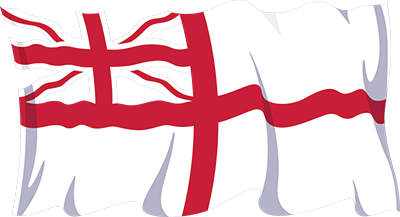
Throughout its history HMS VERNON, on the eastern side of the entrance to Portsmouth harbour, has been the Royal Navy’s principal focus for underwater warfare, as practised from surface ships. Other establishments have arisen as the technology of underwater weapons and detection systems have been developed, particularly during the Second World War but, as the shape of the RN changed, VERNON held a pre-dominant place as the centre for research and training in underwater weapons and the associated techniques of their use.
In the Second World War, with the increasing sophistication of the sea mine, VERNON took on responsibility for mine disposal and development of mine countermeasures. Investigation of captured enemy mines, always hazardous and sometimes with tragic consequences, led to the development of successful countermeasures.
Mine warfare training was moved to the School of Maritime Operations (SMOPS) at HMS DRYAD, in November 1995 and when the diving school, later moved to new premises on Horsea Island, HMS VERNON ceased to exist closing its gates for the final time on 1 April 1996.
VERNON’s part in the history of TON Class mine countermeasures vessels included the very significant role of training several thousand officers and ratings in the increasingly sophisticated aspects of dealing with moored and ground mines with a variety of trigger mechanisms: contact, magnetic, acoustic and pressure, sometimes in combination. This training was centred on the Minewarfare Section lodged in one of the oldest buildings on the site, the old stables. The Department provided specialist classroom instruction for everyone from the Commanding Officers (designate) of Ton class ships to newly joined ordinary seamen, in courses of up to a month in length. Minewarfare training also formed the final two months of the Long Course for specialist TAS Officers, while officers appointed to minesweepers had to master the navigational skills of cross-tide sweeping, and gain an understanding of the mathematics of probability theory adapted to planning the clearance of a field of influence mines on a statistical basis. Finally, the VERNON Minewarfare Section hosted a series of two week exercise periods for the RNR Tons, the 'VERMEX' series, designed to keep RNR personnel up to date with new developments.
A small squadron of TONs was attached to VERNON, proudly bearing a large 'V' as a funnel badge, to provide for the practical application of this classroom training, notably in the seamanship skills of streaming and recovering the various sweeps. The ships attached to VERNON also made training films and augmented the Trials Squadron attached to the Admiralty Under Water Research Establishment [AUWRE] at Portland. They undertook minor equipment trials and participated in the development of more complex combination rigs to counter the increasingly sophisticated influence mines likely to be deployed by an enemy.
The drills and seamanship necessary for effective operation of the new minehunting equipment and remote mine destruction weapons, plus fitting of more precise navigational equipment which culminated in the first use of satellite navigation by small ships in the Royal Navy were pioneered at VERNON.
In November 1995 Minewarfare training was moved to the School of Maritime Operations at HMS DRYAD in nearby Southwick and subsequently to the Minewarfare Operational Training Centre at the Maritime Warfare School in HMS COLLINGWOOD, across the harbour in Fareham. The old VERNON establishment closed its gates for the last time on 1 April 1996.
The establishment closed in 1996 and the site is now occupied by Gunwharf Quay shopping complex. In 2019 a monument to the RN Minesweeping and Diving activities conducted at VERNON was inaugurated in the former basin (See gallery below).










